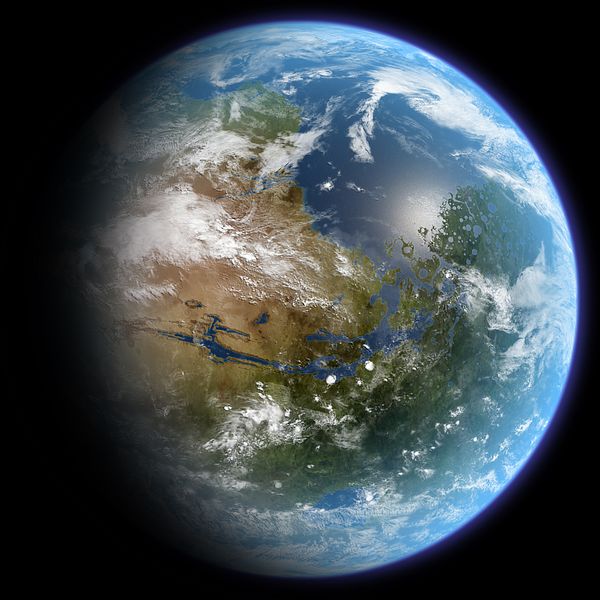A rare set of rocks, blasted from the surface of Mars by an ancient impact, surprised scientists with signs the planet’s interior may still be as wet as our own:
The Bunsen Burner — The Martian meteorites are believed to have formed in the planet’s mantle, the layer of the planet just under the crust. By analyzing the chemical content of the rocks, geologists can deduce the processes that formed them, and gain knowledge about Mars’ geological past. From their analysis, the team concluded that the mantle from which the meteorites was derived contained between 70 and 300 parts per million of water. The upper mantle of Earth, in comparison, contains 50 to 300 ppm of water.
Scientists believe that billions of years ago the rocky-iron core of Mars cooled and lost its plasticity causing the magnetic field to weaken. With no magnetic field to protect the upper atmosphere, such as we enjoy here on earth, the solar wind slowly stripped away much of the early Martian air.
Mars was probably covered in oceans and lakes at first. But as its atmosphere leaked into space or was locked up in the soil, the planet dried up and cooled down, most of the surface water probably froze and then sublimated, where it was then split into constituent hydrogen and oxygen by solar radiation, most of the light hydrogen gas escaped while and much of the oxygen may have reacted with minerals like iron in the sand. Traces of the ancient Martian oceans seeped down below the surface and froze leaving Mars as we see it today: rust red sand and surface rock guarding veins of subterranean ice below a thin wispy atmosphere composed mostly of carbon dioxide. It is so cold on Mars today that some of the CO2 freezes out during the Martian winter and coats each pole with a thin layer of dry ice.

Mars with continents, clouds, and oceans, as it may have been billions of years ago, and could be in the future with human intervention. Click image to learn more about the search for life on Mars.
Mars is by far the most earthlike planet in our solar system — no other world even comes close. But data collected by NASA and the ESA indicate it was a lot more earthlike billions of years ago. If only Mars had been a little larger, big enough to hoard its inner heat like earth, the magnetosphere might have persisted and Mars today would be a very different and much more hopsitable planet.


Good article and news, cheers.
Well, that depends on what you mean by earthlike.
Venus is actually our planetary twin in many ways such as size and mass. Titan and Pluto are in some way more comparable in having atmospheres weatherand in Titans case rivers and lakes, in Pluto’s having precipitation – snowfall. Of course, on Pluto it’s the whole atmosphere that snows out in winter but, meh, close enough! Pluto’s atmosphere is also mostly nitrogen like ours and unlike the Carbon dioxide that blankets Venus and Mars.
Mars is however prettty much the nearest thing to earthlike surface conditions outside our world inour solar system though. (/Astronomy pedant.)
The hypothetical what if question here that really has me wondering is what if Mars was in the orbit of Venus and Venus in the orbit of Mars?
Mars would lose a lot of atmosphere still but it would certainly be kept warmer and without the suffocating blanket of C02 that turned Venus into “Svante’s Inferno” with oven-like temperatures and runaway greenhouse effect and crushing pressures and acid rain that never hits the too-hot ground. Could Mars be habitable or atleats much more comfortable where Venus is?
Venus out at Mars distance would be another colder Earth – would it have developed along much friendler earth-like lines there and still be liveable today?